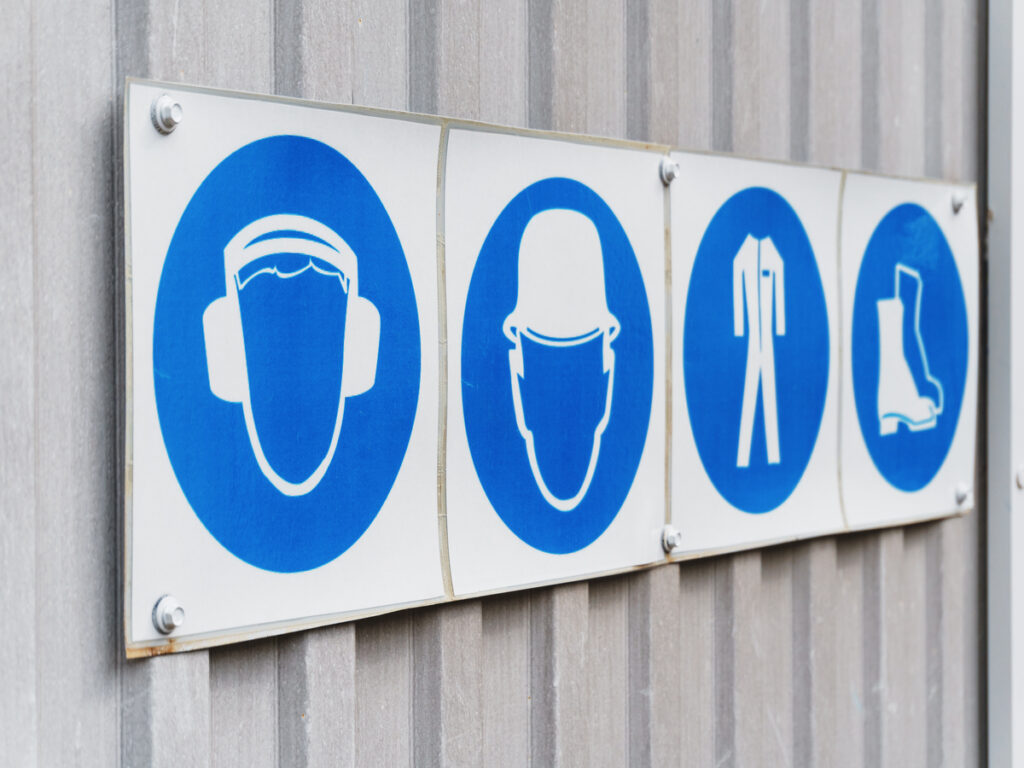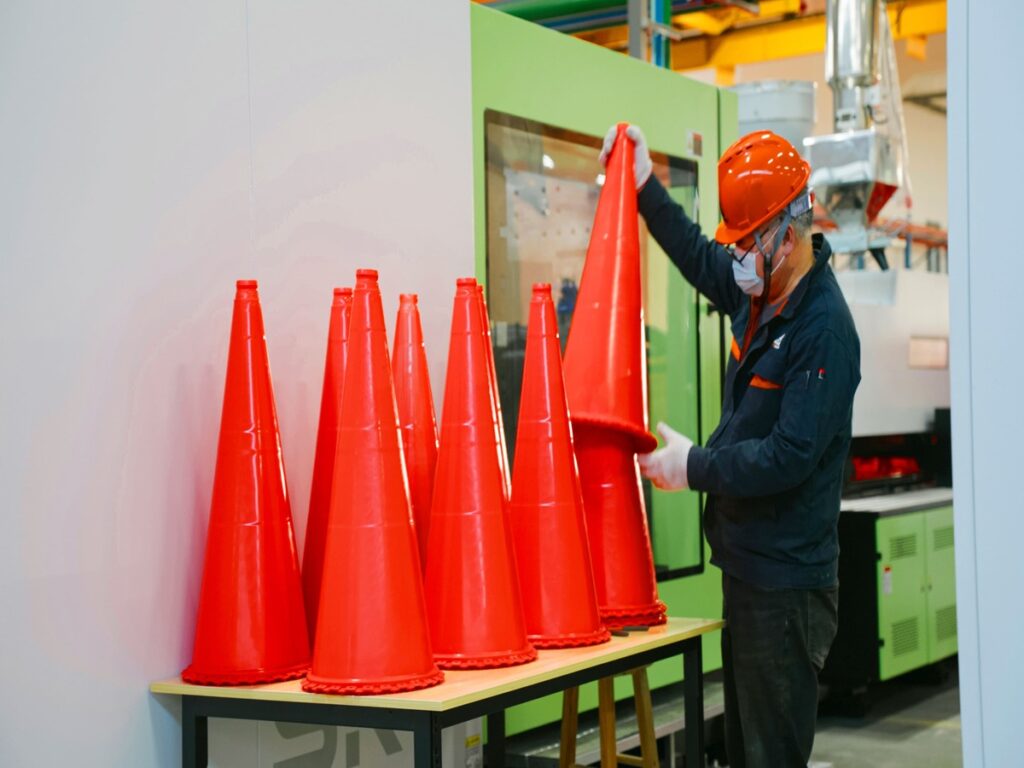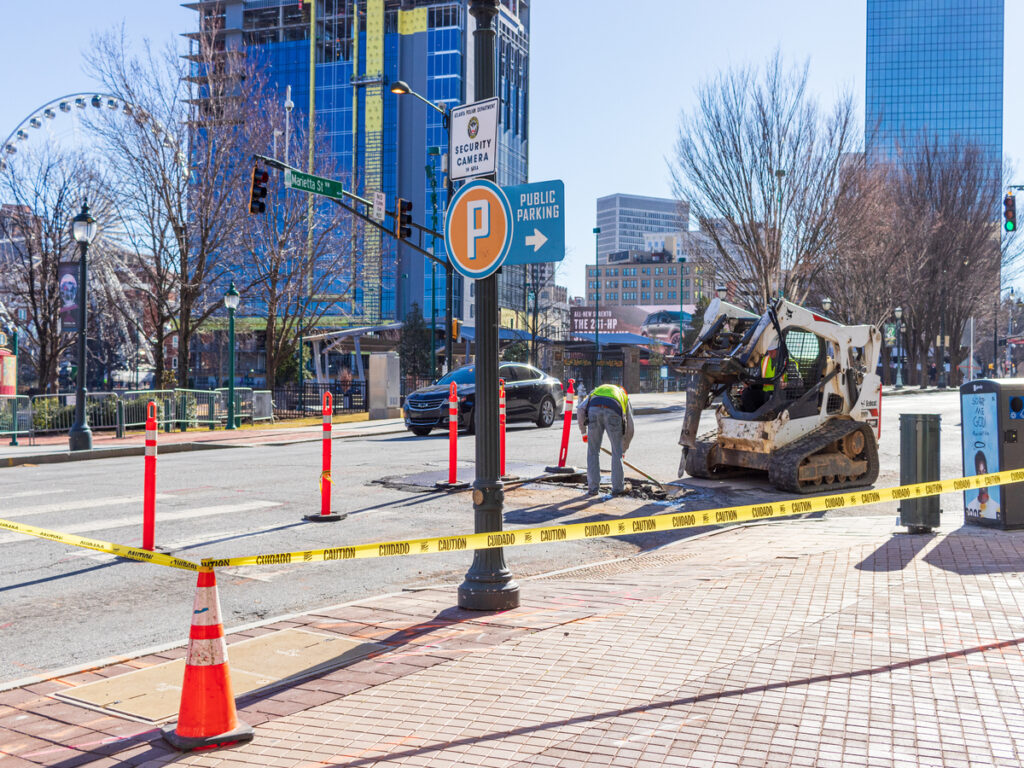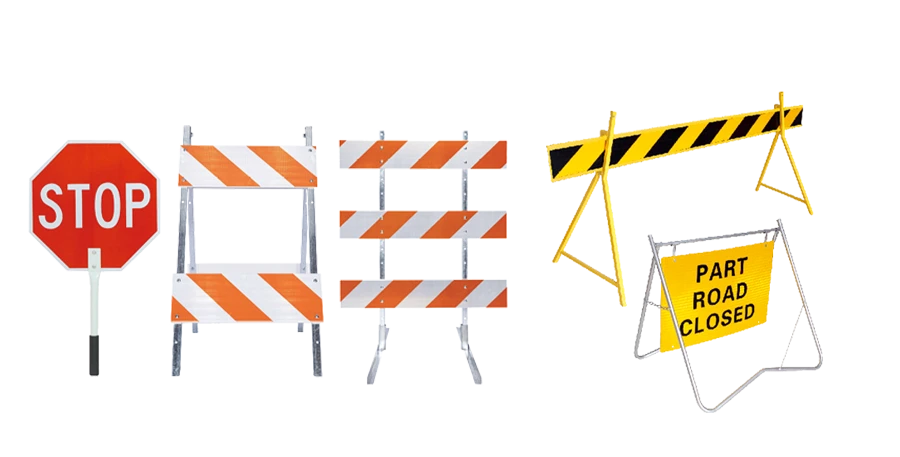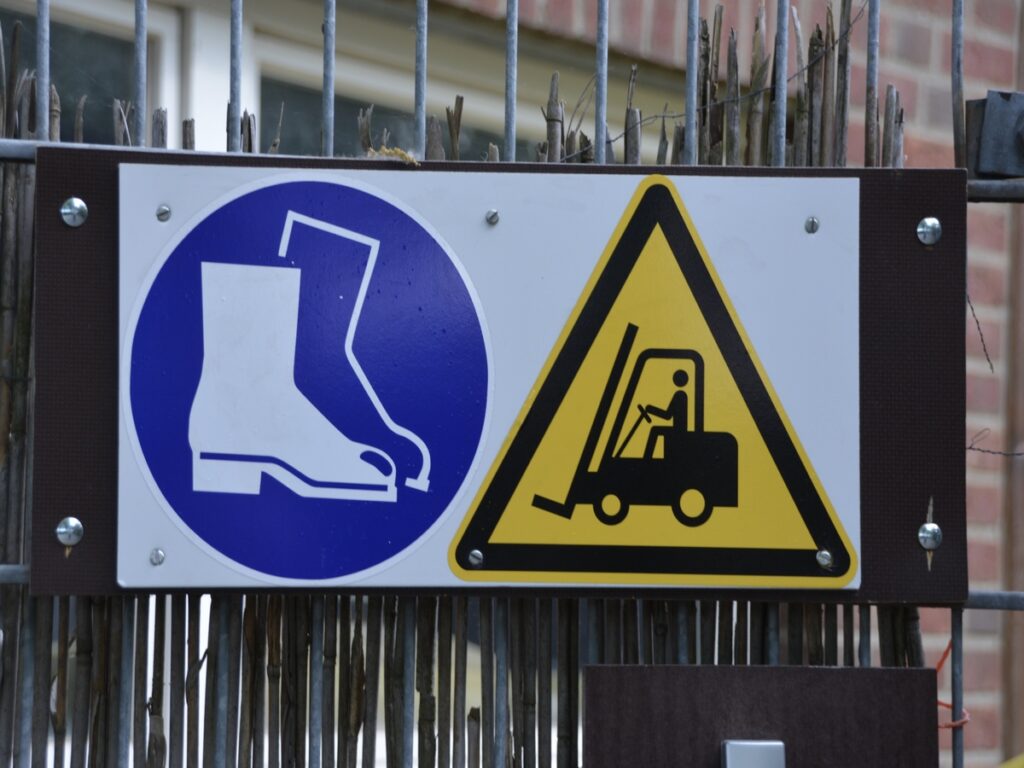
When you think about safety signs at work, you want each sign to be easy to see and last a long time. Picking the right materials for required PPE signs is very important for safety. You need clear signs to show when personal protective equipment is needed. Good design helps everyone notice the sign fast. Strong signs keep your safety message clear wherever you put them. Choosing the best materials helps protect your team and keeps safety rules strong.
A OPTRAFFICO, we understand the importance of strong, di lunga durata PPE signage. Our signs are made from high-quality materials that withstand harsh work conditions while maintaining visibility. Che tu sia in costruzione, produzione, or any other high-risk environment, OPTRAFFICO offers durable and eye-catching PPE signs to help you meet safety standards and protect your workforce. With our customizable options, you can ensure that your safety messages are clear and effective.
Takeaway chiave
- Pick materials that do not get damaged by chemicals. This helps safety signs work well in dangerous places.
- Use strong materials like aluminum for signs outside. These signs last long and stay easy to see in bad weather.
- Use bright colors and simple shapes for signs. This makes them easy for all workers to see and understand.
- Check safety signs often and change them when needed. This keeps messages clear and follows OSHA and ANSI rules.
- Make signs that match your workplace needs. Change the language and design to help everyone understand and stay safe.
Why Material Choice Matters for Required PPE Signs
Impact on Safety Signs and Compliance
Safety signs should do more than just hang on a wall. They must catch people’s eyes and give a clear warning. Picking the right materials helps your team see the sign quickly and know what to do. Good safety signage helps your workplace follow rules from groups like OSHA. If you pick the wrong materials, your safety signage might fade, crepa, o rompere. This can put everyone in danger.
Mancia: Always make sure your safety signs can handle chemicals and other dangers in your workspace.
Here are some things to think about when picking materials for safety signage:
| Fattore | Descrizione |
|---|---|
| Chemical Resistance | Materials must resist permeation, degradazione, and penetration by chemicals to ensure effectiveness. |
| Permeation | The time it takes for chemicals to permeate through materials is critical for safety. |
| Degradation | Physical changes in materials due to chemical exposure can compromise protection. |
| Penetration | Chemicals can move through zippers and seams, highlighting the need for careful material selection. |
| Manufacturer Variability | Different manufacturers’ materials may perform differently, emphasizing the importance of specific testing data. |
When you use strong materials for your required ppe signs, you save money. You avoid fines and keep your team safe. This means fewer injuries and less lost time.
Durability and Visibility Concerns
You want your safety signs to last a long time. In luoghi affollati, signs can get scratched, torn, or faded. If your safety signage loses its warning, people might not see important rules. That’s why you should think about durability and visibility when picking signage materials.
See how different materials work in tough places:
| Materiale | Resistenza alle intemperie | Abrasion Resistance | Lifespan in Outdoor Environments |
|---|---|---|---|
| Lightweight Polyester | Not very strong, tears easily | Not good for rough places | Breve vita, best for quick jobs |
| 210D Polyester | Lasts okay outside | Stays strong | Medium life, Buono per molti usi |
| 420D Polyester | Hard to tear, stands up to strong wind | Molto duro | Long life, good for lots of use |
| High-strength Polyester | Made for long outdoor use | Handles lots of force | Very long life, Buono per luoghi difficili |
| Nylon | Can fade in sun unless treated | Tears easier | Medium life, good for places near water |
If you buy strong safety signage, you get more than just a sign. You get a warning that stays bright and easy to see, anche in maltempo o aree trafficate. Good design and the right materials keep your safety message clear and your team safe.
Types of PPE Signage Materials
Vinyl for Indoor PPE Signs
You can find vinyl signs in many places at work. They are in offices, break rooms, and on factory floors. Vinyl is strong and easy to move around. You can stick it on walls, porte, or other flat spots. The colors are bright, so people notice them fast. Vinyl is a good choice if you need a sign quickly. It does not cost a lot of money. Here are some good and bad things about vinyl:
| Vantaggi | Svantaggi |
|---|---|
| Durabilità | Installation issues (air bubbles, peeling) |
| Versatilità | Risk of damage during application/removal |
| Economico | |
| Vibrant colors |
Vinyl signs can peel or bubble if you do not put them on right. The sticky part can get weak if lots of people walk by.
Aluminum for Outdoor Safety Signs
Alluminio is a great pick for signs outside. You want your sign to last in rain, nevicare, e sole. Aluminum does not rust or break down easily. This means your sign stays easy to read for a long time. Here is how aluminum compares to other materials:
| Materiale | Durata all'aperto | Resistenza alle intemperie |
|---|---|---|
| Alluminio | 5-10 anni | Naturally resists rust and corrosion, ideal for rain, nevicare, e esposizione ai raggi UV |
| Plastica | 1-2 anni | N / A |
| Magnetico | N / A | Better for temporary use |
Aluminum signs are best if you want them to last many years. You do not have to worry about them fading or getting ruined by bad weather.
Plastic and Polycarbonate Options
Plastic signs are affordable for basic needs, while durable polycarbonate signs suit high-traffic or demanding areas.
| Caratteristica | Acrilico | Policarbonato |
|---|---|---|
| Forza | May crack | Extremely durable, resistente all'impatto |
| Costo | Conveniente | Più alto, but better long-term value |
| Resistenza alle intemperie | Good UV protection | Withstands extreme conditions |
Reflective and Specialty Materials
Segni riflettenti are easy to see at night or in dark places. These signs help stop accidents because people can see them even when it is dark. Studies show reflective signs can cut crashes by about one third.

If you work on roads or in construction, reflective signs help keep everyone safe. Some signs use special materials like smart LED lights to make them even easier to see.
Matching PPE Sign Materials to Your Workplace
Interno vs. Outdoor Environments
You need to know where your safety signs will go. Indoor and outdoor places need different sign materials. In casa, vinyl or plastic signs work well. These are good for offices, break rooms, and factory floors. They stay bright because there is no bad weather inside. For outside, you need signs that can handle rain, sole, e vento. Aluminum signs are best for outdoors. They do not rust and last for years.
The weather and air in your workplace matter a lot. Alto calore, umidità, or chemicals can ruin signs fast. If your workplace is wet or sunny, pick signs that do not fade or get water damage. Wet places need signs that do not soak up water. Hot areas need signs that can take high heat. This means you will not have to buy new signs all the time. Your safety message will stay strong.
Mancia: Check your workplace often for changes in heat, wetness, o sostanze chimiche. This helps you know when to get new safety signs.
Hazardous and Specialized Areas
Some places need special signs to keep people safe. Labs, chemical plants, and construction sites have extra dangers. You must use signs that follow strict rules. Labs need signs at every door. These signs show what PPE you need, who is in charge, and what dangers are inside. Construction sites use signs to warn about falling things or loud noise. These signs must be strong and easy to see from far away.
Here are some things to remember for dangerous places:
- Use signs that show the least ppe you must wear, like safety glasses, guanti, or closed-toed shoes.
- Put biohazard signs on lab doors. Add things like biosafety level and emergency contacts.
- Make sure every work bench or area has a sign with the right warning.
- Pick signs that can handle chemicals, Calore, or hard hits, depending on the danger.
A good hazard check helps you pick the right sign for each place. Questo mantiene tutti al sicuro e segue la legge.
Placement and Customization Tips
Where you put your safety signs is very important. Put signs where people can see them before they go into a risky place. Use simple designs so the warning is easy to notice. In luoghi affollati, use path markings to help people walk safely. Color codes help workers know what kind of danger is there. Red means danger and yellow means be careful.
Segni personalizzati are good for places with special needs. In chemical plants, you may need to change signs every day for new chemicals. Construction sites use signs in more than one language. This helps everyone understand the warning. Food factories use color signs to stop germs from spreading. Warehouses change signs for new dangers or repairs.
Here is a checklist to help you pick the right sign materials:
- Check what dangers are in each place.
- Decide if the sign is for inside or outside.
- Pick materials that can handle heat, wetness, o sostanze chimiche.
- Make sure the sign follows all safety rules.
- Put the sign where it is easy to see.
- Use simple design and color codes for better warning.
- Change signs when dangers or work areas change.
Let’s look at how different jobs use safety signs:
| Industria | Segnale di esempio | Scopo |
|---|---|---|
| Assistenza sanitaria | Gown, Gloves, Face Shield Required Before Entry | Keeps people safe in isolation rooms. |
| Assistenza sanitaria | Biohazard: Bloodborne Pathogens — PPE Required | Tells staff to be careful for safety. |
| Costruzione | Fall Protection Required Beyond This Point | Warns workers about fall dangers. |
| Costruzione | Attenzione: Overhead Load | Tells workers to stay away from heavy loads. |
| Produzione | Lockout Required Before Servicing—See Panel Instructions | Stops accidents during repairs. |
| Produzione | Hearing Protection Required in This Area | Protects workers from loud noise. |
Picking the right materials for your required PPE signs keeps your workplace safe. Good design, strong signs, and smart placement help your safety signs work well. Quando segui questi passaggi, you make your workplace safer and your warnings clear.
Compliance for Required PPE Signs
OSHA and ANSI Material Standards
You want your safety signs to follow the rules. OSHA and ANSI make these rules for safety signage at work. These rules help keep people safe and stop problems with inspectors. OSHA tells you how your signs should look, like what colors to use. ANSI gives more details, like what instructions and warnings to put on signs.
Here’s a simple chart about what OSHA and ANSI want:
| Aspetto | Dettagli |
|---|---|
| Standard OSHA | Give rules for safety signs, like how they look and what colors to use. |
| ANSI Standards | Give extra rules for safety signage, like instructions and warnings. |
| Material Requirements | Do not say what materials to use, but signs must be strong and right for the job. |
Pick materials that last and are easy to read. OSHA and ANSI want your signs to be clear and easy to see anywhere. Se segui queste regole, your team can spot dangers and act fast.
Legal and Safety Requirements for Personal Protective Equipment Signs
You must follow the law when you pick materials for required PPE signs. OSHA says you need to put signs where workers see them before danger. The rules say your signs must use words like “Pericolo” O “Attenzione” that people can read from five feet away. This helps everyone know about dangers and stay safe.
Your safety signage materials should be strong. OSHA wants you to use aluminum or heavy plastic for signs in busy or rough places. These signs should have round corners and no sharp edges. Da questa parte, your sign does not hurt anyone. If you use the right materials, your signs last longer and stay clear.
If you do not follow OSHA and ANSI rules, you can get in big trouble. Here are some things that can happen:
- If you do not follow OSHA rules, you can get fines from $16,131 for first mistakes to $161,323 for big or repeat mistakes.
- A factory had to pay over $50,000 for not putting up warning signs, and someone got hurt.
- Not following the rules can also cause injuries, slow down work, and get you in legal trouble.
You want your safety signs to work well. Pick materials that fit your workplace dangers. Make sure your signs are easy to see and read. When you follow OSHA and ANSI rules, you keep your team and your business safe.
Picking the right materials for required PPE signs helps keep your workplace safe. Safety signs help you follow OSHA and ANSI rules. Aiutano anche a impedire agli incidenti di accadere. Always look at your workplace and think about what personal protective equipment is needed. Use the checklist to help you choose the best materials. Talk to signage experts if you need help.
Domande frequenti
What material works best for outdoor required PPE signs?
Aluminum signs work best outside. Resistono alla pioggia, sole, e vento. You can trust them to stay bright and readable for years.
How often should I replace my safety signs?
Check your signs every few months. Replace them if you see fading, danno, o peeling. Fresh signs keep your safety message clear.
Can I customize PPE signs for my workplace?
SÌ, you can customize signs. Add your company logo, change colors, or use different languages. Custom signs help everyone understand the rules.
Where should I place required PPE signs?
Put signs where people enter work areas. Place them at eye level. Make sure everyone sees the sign before they start work.
Do I need reflective signs in every workplace?
You need reflective signs in places with low light or night work. Construction sites and roadwork areas benefit most. These signs help prevent accidents.

